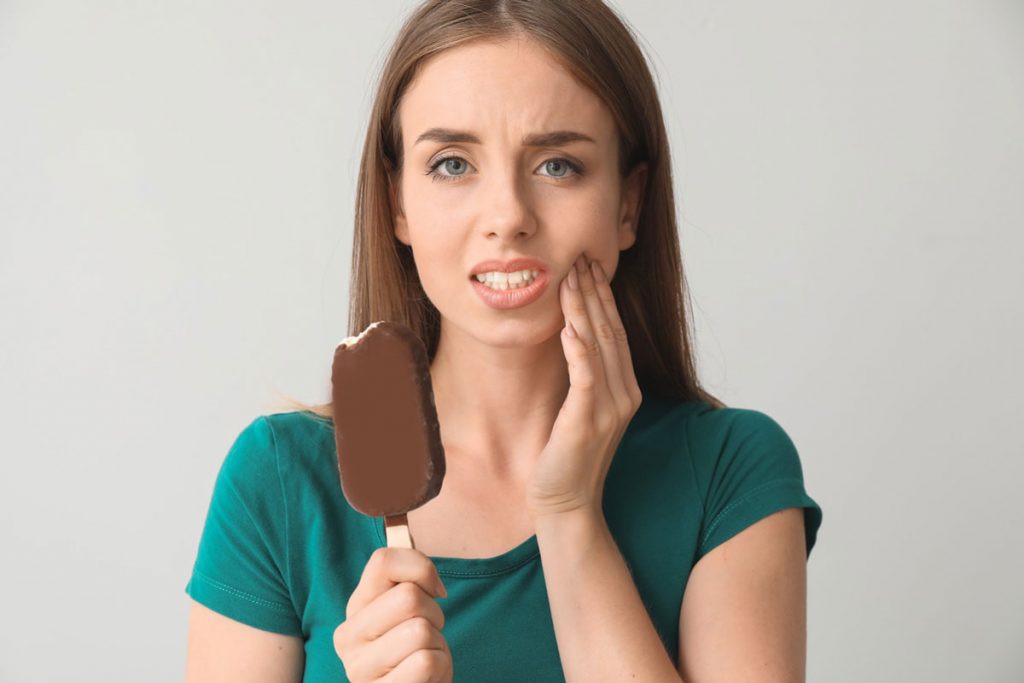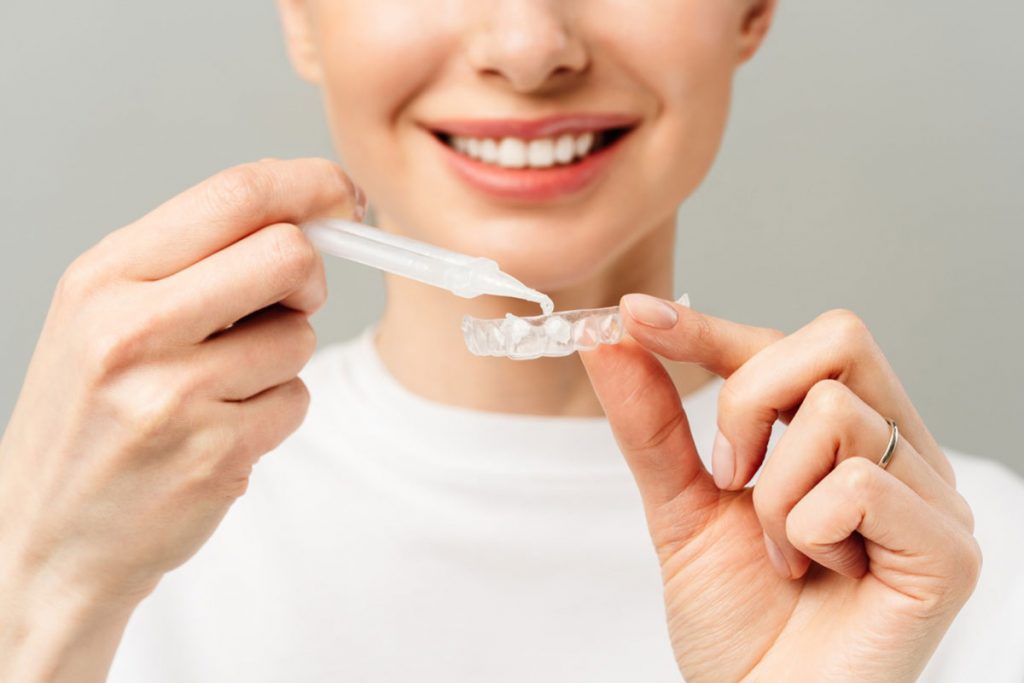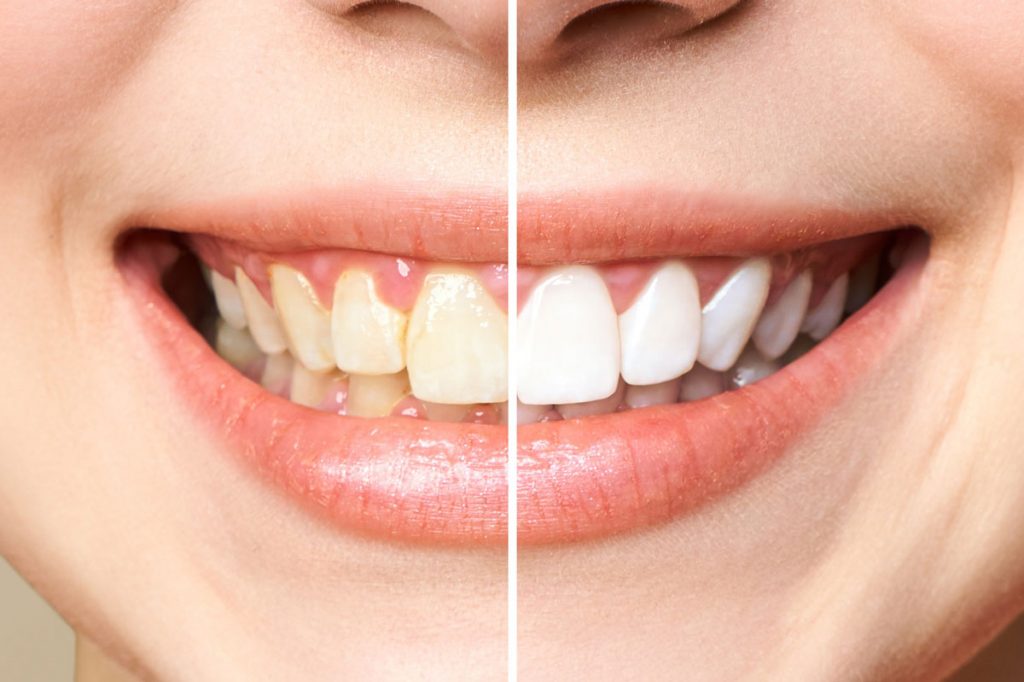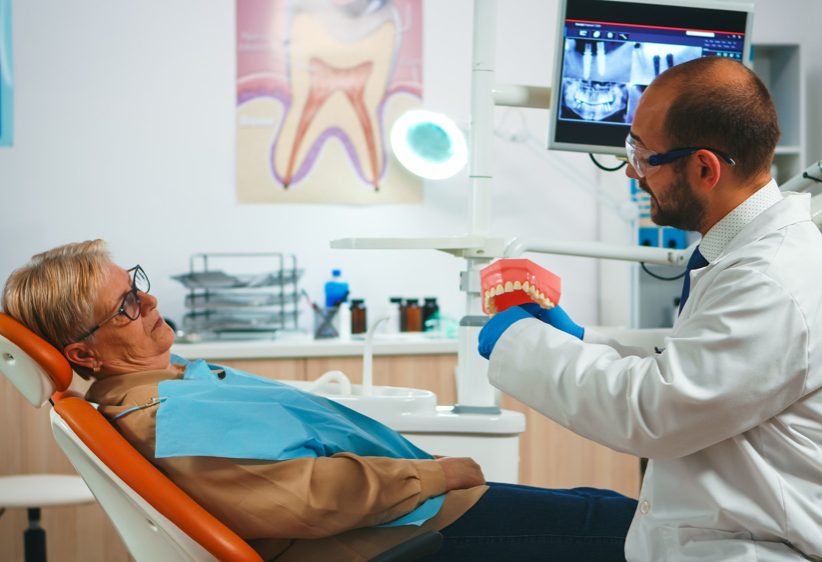Many have become obsessed with the smiles of Hollywood celebrities, and that's not surprising. The…

Benefits and side effects of teeth whitening
How does teeth whitening work?
Before we understand how teeth whitening works, we need to think about how our teeth become coloured by foods, drinks, and small particles in the air we breathe. When miniature colouring particles remain on the teeth’s surface, the bacteria they hold slowly “eats” into the enamel, creating nearly invisible cracks at first. The particles then find their way below the surface of the teeth, which is why we can’t really remove staining merely by brushing. However, regular (twice daily) tooth brushing will prevent the particles from entering deeper into the enamel.
But what to do once your teeth have started changing colour? Aside from using veneers, which would be a rather aggressive solution for improving the colour of your teeth, you can take advantage of the benefits of teeth whitening, either in-clinic or with a home whitening kit. The gel of the whitening products contains an agent that allows it to enter the enamel of the tooth carrying oxygen molecules. When they reach the discoloured particles, the oxygen breaks down the stains exposing the true colour of your teeth.
How can teeth whitening make your smile healthier?

Although this isn’t the most famous function of teeth whitening solutions, some dentists claim that the antiseptic effect of the gel can be helpful for people with irritated gums. As a rule, however, teeth whitening can also irritate the gums, which is why teeth whitening gels should not be used as a treatment of any gum diseases! You absolutely must not apply whitening before having a complete dental check-up.
Be exceptionally cautious with tooth whitening. When you start researching the various brands, you will notice that gels come in different concentrations, generally between 3% and 20%. The main difference is simple: a 6% gel, for example, will require more applications before achieving the required outcome but will also cause less sensitivity and irritation.
Risks of teeth whitening procedures

Perhaps the biggest annoyance of this treatment is that approximately 66% (Smile Brilliant, n.d.) of people feel increased tooth sensitivity during and shortly after teeth whitening. This inconvenience, however, is temporary and is by no means a sign of an issue with the procedure.
When it comes to risks, there is one that you should not ignore: whitening teeth with caries or otherwise compromised enamel could destroy the tooth and cause a myriad of dental issues. Not only will you feel a throbbing, almost unbearable pain during the actual whitening if a tooth has caries, but you will most likely require root canal treatment followed by a dental crown.
How to choose the right teeth whitening for you?

When choosing a tooth whitening procedure, you have two main options: in-clinic or a home whitening kit. The most obvious benefit of an in-chair whitening is the speed with which you will see the result. In just one hour, some products will offer up to 7 shades difference. And although the science is not clear on this, most people do claim that in-chair teeth whitening can cause higher sensitivity within a couple of hours to follow, yet the feeling will slowly subside.
Home whitening kits act slightly differently. Requiring approximately 2 weeks of daily usage to show any significant changes, the gel will gradually alter the staining.
The most popular method is of course the combination. Two weeks of home treatment followed by
The most popular method is, of course, the combination. An hour or even less of in-clinic teeth whitening followed by two weeks of home treatment can provide you with teeth up to 17 shades lighter. This statement is, of course, only true if your teeth are severely coloured by external factors but have a rather bright natural colour.

Main ingredient: carbamide or hydrogen peroxide
To put your minds at ease quickly: there’s no difference in the result, regardless of the main ingredient of the tooth whitening agent. Both are equally efficient and will give you the bright smile you desire. BUT, if you’re in a hurry because of an important job interview, a dinner, or another event that requires the perfection of your smile, carbamide peroxide tooth whitening will give you a more visible difference quicker. Both Phillips Zoom and Enlighten offer carbamide peroxide gels.
Managing your expectations
There are two things you need to know before you opt for teeth whitening:
- Your teeth will only whiten to their natural level. Tooth whitening treatment cannot alter the colour of your teeth, but it can surely remove the stains, even if you don’t realise you have any.
- Composite veneers, crowns, and bridges will not whiten. If you have had any of these treatments done but wish to maintain a whiter smile, you will need to have a replacement of any dental prosthesis.
Bibliography
Smile Brilliant, n.d. Smile Brilliant Ventures, Inc.. [Online]
Available at: https://www.smilebrilliant.com/articles/how-does-teeth-whitening-work
[Accessed 7 June 2021].


